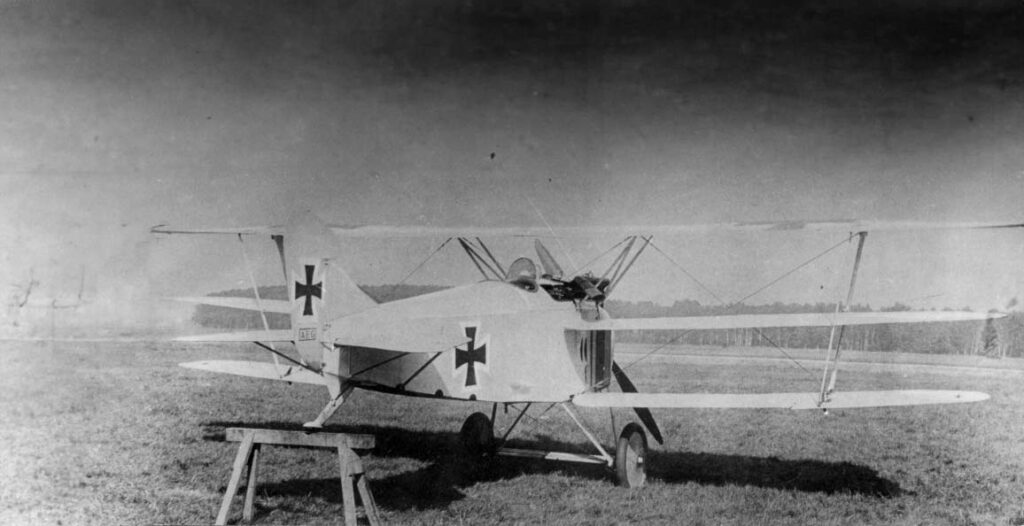AEG Dr.I: a rare German triplane prototype, engineered for agility and control in WWI dogfights, with a single rotary engine. The article provides a detailed analysis of the AEG Dr.I, a German triplane prototype developed during World War I for air superiority. It outlines the historical context of its creation, delves into its unique triplane design, discusses its performance capabilities, examines its intended military role and actual use, and concludes with an assessment of its impact and legacy in aviation history.
The AEG Dr.I triplane emerged during the zenith of World War I aviation, representing Germany’s endeavor to match Allied air advancements. Although it never reached mass production, its development reflects the intense aerial arms race of the era.
History of the Development of the AEG Dr.I
World War I saw rapid development in military aviation, with fighters evolving quickly to gain an edge in dogfights. In this fervent atmosphere, the AEG Dr.I was conceived as Germany’s answer to the successful Sopwith Triplane of the Allies.
The AEG Company, already an established electric and machine works conglomerate, ventured into aviation with the aim of creating a superior fighter aircraft. They sought to craft a plane that would outmaneuver opponents through enhanced climb rates and agility, which were key in the close-quarter dogfights that characterized aerial combat at the time.
The Dr.I program was launched in mid-1917 by AEG, without any official requirement from the German Imperial Air Service. AEG’s ambition was to design a triplane that would leverage the inherent advantages of this configuration, following the footsteps of the Fokker Dr.I, made famous by the Red Baron, Manfred von Richthofen.
The AEG Dr.I first took to the skies in late 1917, undergoing several tests and evaluations.

Design of the AEG Dr.I
The AEG Dr.I was a single-seat triplane featuring three narrow-chord wings, which aimed to provide better lift and maneuverability compared to biplane designs. Its overall length was approximately 5.9 meters (19.4 feet), with a wingspan of about 7.2 meters (23.6 feet).
The triplane configuration presented both benefits and complications. The close spacing of the wings created interference, reducing the lift-to-drag ratio, but offered excellent climb rates and compact size. It also posed a challenge in terms of visibility for the pilot, a critical factor in dogfights.
The airframe of the Dr.I was predominantly constructed of wood, with the fuselage and wing spars made of this traditional material, while the exterior was covered in fabric, following the common practice of the time.
Performance of the AEG Dr.I
The AEG Dr.I was powered by a rotary engine, which was common in WWI fighters for its good power-to-weight ratio. The performance data for the Dr.I is sparse due to its prototype status and the limited number of test flights it underwent.
The Dr.I’s triplane design was expected to endow it with superior climbing capabilities and agility in the air, essential for the dogfighting scenarios of the day. Unfortunately, due to its experimental nature and the lack of substantial test records, direct comparisons with contemporaneous aircraft like the Fokker Dr.I are speculative at best.
Military Use and Combat of the AEG Dr.I
The AEG Dr.I was armed with twin synchronized machine guns, standard for the era’s fighters. However, its actual combat use was nonexistent, as the aircraft remained a prototype and was not adopted by the German military.
There are no records of the AEG Dr.I participating in any military operations or being sold to other countries. It was quickly overshadowed by other designs and did not contribute directly to combat outcomes during the war.
The AEG Dr.I was a brief yet innovative episode in the history of military aviation. It stood as a testament to the technological experimentation of World War I, where rapid advancements and the need for air superiority drove design to new heights. While it never advanced beyond prototype status, the AEG Dr.I contributes to the narrative of aviation development, showcasing the relentless pursuit of improved performance and maneuverability in the face of global conflict.
Back to the experimental aircraft section.